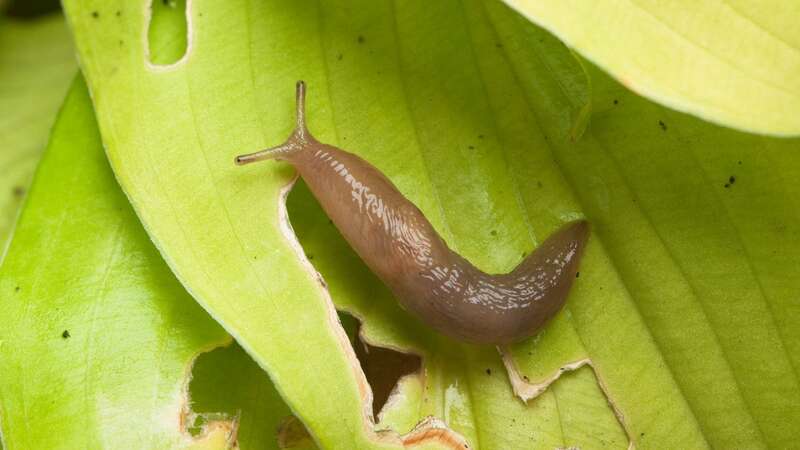As spring comes into full swing, UK gardeners are being warned to keep an eye out for the five most common pests that could cause chaos on their plants.
While a few bugs here and there won't do much harm, a full-blown infestation can quickly lead to disaster. With new growth sprouting up left, right and centre this time of year, fresh crops and vibrant flowers can become a magnet for all sorts of creepy crawlies. Keeping your garden tidy and free from debris can help keep at bay those bugs and insects that pose a threat to your plants.
However, some critters may still manage to find their way to your plants and crops. The arrival of warmer spring weather can attract everything from slugs to larvae to your garden plants. There are several tell-tale signs that could suggest they're around, according to The Express.
Leaf miners
Leaf miners are actually the larvae of various pests, including moths, flies, and beetles. These little blighters create trails and blotchy patches as they munch their way through leaves. While they're relatively harmless and don't usually need treating, a serious infestation can be kept under control with sticky traps and insecticidal soap to catch egg-laying adults.
Slugs
Slugs are slow-moving pests that can rapidly multiply in the warm, wet climate of spring, are particularly common in gardens full of young seedlings. They hide in cool, damp places during the day and come out on warm evenings to feast on green leaves.
 Four bedroom home with its own TRAIN TRACK on sale… but there’s a catch
Four bedroom home with its own TRAIN TRACK on sale… but there’s a catch
Mulching around plants might increase slug problems, but these can be easily managed by:
- Reducing your watering schedule for problem-plants
- Use cardboard and newspaper to separate the soil between rows in vegetable patches
- Lift shelter materials
- Harvest slugs by scraping them into a container of soapy water
Thirps
Adult thrips pose a dormant threat to your garden throughout the winter as they settle into bark, plant debris and other materials. Once these mature pests have finished overwintering, they become active in early spring (late March), when they start laying eggs in plant tissues.
These sap-sucking insects can discolour and distort almost any type of plant, often leaving tiny black specks of excrement on the leaves and white patches on petals. Eggs can hatch in as little as three to five days, with hungry nymphs emerging ready to feed for around one to three weeks.
According to the Almanac, thrips can have up to 15 generations per year outdoors, though neem oil soap and sticky traps work well to control infestations.
Glasshouse whitefly
Glasshouse whitefly, whiteflies are sap-sucking bugs which feed on many vegetables and ornamental plants grown in greenhouses. It is relatively easy to spot whiteflies on infested plants, creating a cloud of small white-winged insects (1.5mm long) above the host plant. You may also see flat, oval, creamy white scale-like nymphs on the underside of leaves, or sooty mould growth on the foliage, stems and fruits of your plants.
According to the Royal Horticultural Society (RHS), these destructive pests are known to target:
- Cucumber
- Melon
- Tomato
- Peppers
- Chrysanthum
- Genera
- Pelargonium
- Fuchsia
- Lantana
- Poinsettia
- Verbena
It's important to start checking your plants for pests in the spring, before a damaging population can develop. These pests are active throughout the year.
Earwigs
These all-eating nuisances feast on other small invertebrates and plant material, particularly favouring the blooms of clematis, dahlias, and chrysanthemums. Interestingly, earwigs can be a boon for fruit trees as they prey on fruit aphids.
According to the RHS, common signs of earwigs in your spring garden include:
- Nibbled petals and young leaves on flowers
- Tattered, vein-like foliage structures on older growth
- Earwigs feeding on plants at night - these pests are nocturnal so it’s best to check plants after dark using a torch
A straightforward method to trap earwigs is to position upturned flower pots filled with hay or straw on canes among vulnerable plants. Each morning, give the pots a shake and remove these bothersome pests to keep an eye on their numbers.
 Grand Designs’ ‘garden house’ with disappearing walls and incredible roof
Grand Designs’ ‘garden house’ with disappearing walls and incredible roof
Read more similar news:
Comments:
comments powered by Disqus

































